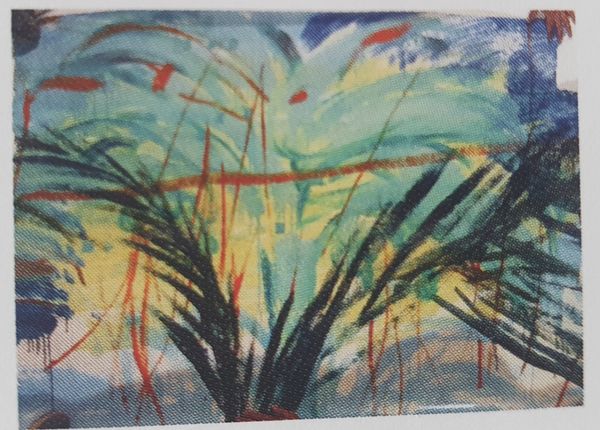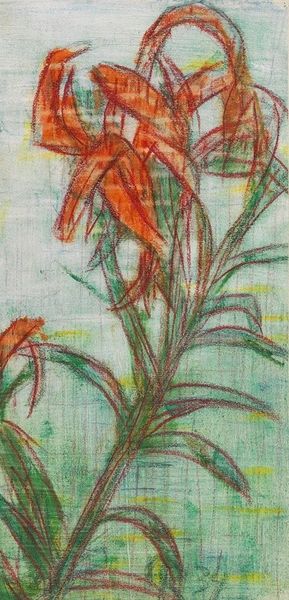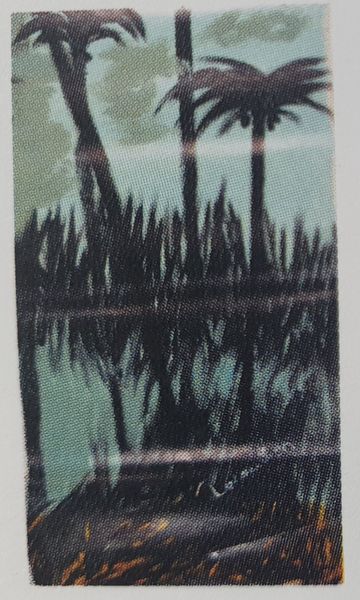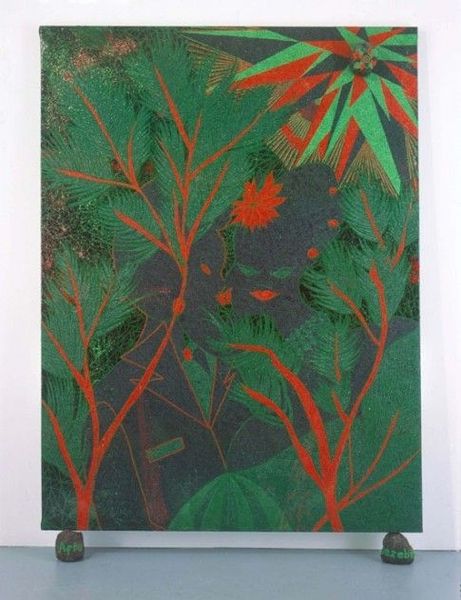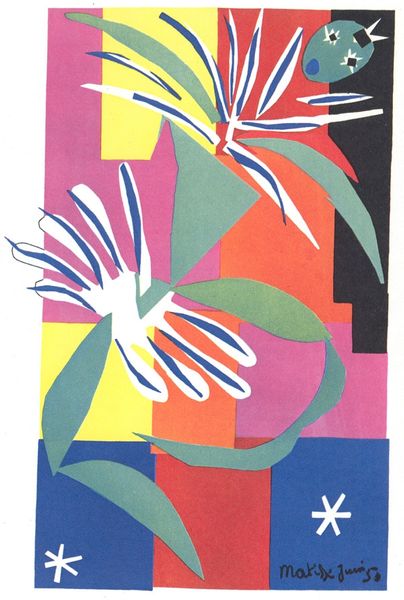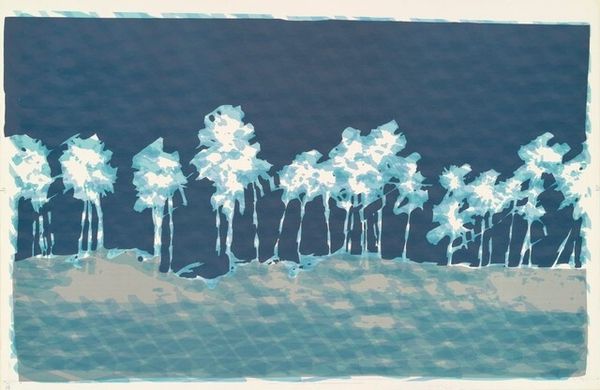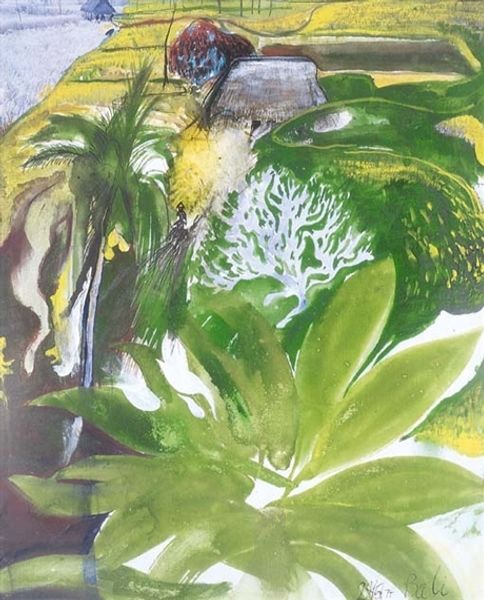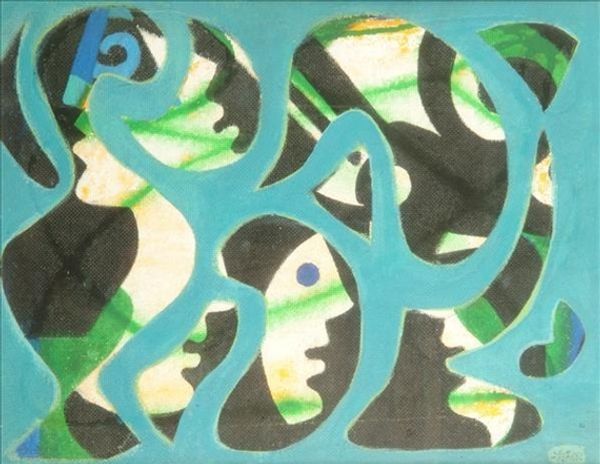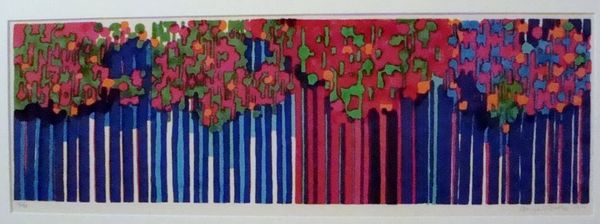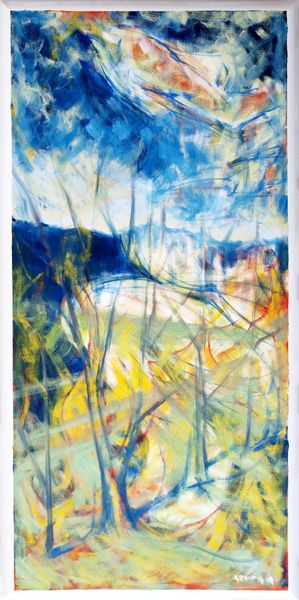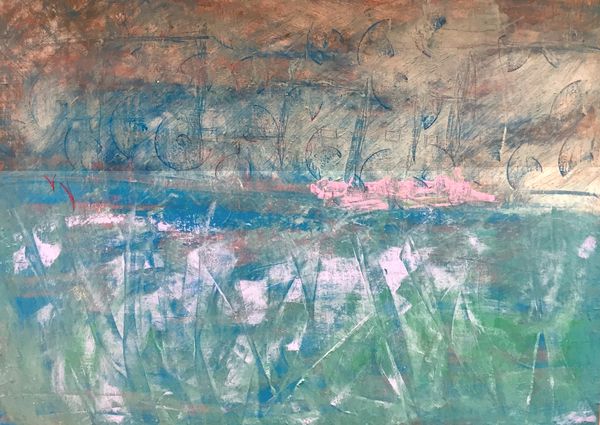
painting, watercolor
#
abstract painting
#
water colours
#
painting
#
landscape
#
watercolor
#
abstraction
#
modernism
#
watercolor
Dimensions: 110 x 165 cm
Copyright: Oleg Holosiy,Fair Use
Curator: At first glance, this work washes over me like a half-remembered dream. There's something ephemeral about it. Editor: That's interesting. Allow me to introduce you more formally to "Abstraction in Japanese style #2" by Oleg Holosiy, painted in 1990 using watercolor. The name, of course, gestures towards a dialogue with Eastern art, but I wonder where it ultimately situates itself. Curator: "Japanese style" immediately brings specific images to mind—serenity, balance, nature—yet this abstraction feels almost frantic. The vertical red lines create a jarring disruption. Are they flames? Reeds? They definitely introduce a contrasting emotional element to the watery blues. Editor: Holosiy came of age as an artist during Perestroika in Ukraine, a time of incredible social and political upheaval. Watercolors, historically, have been tied to ideas of amateur art, so to reclaim it within abstraction reads almost like an intentional disavowal of heroic socialist realism. He finds power in vulnerability. Curator: I'm intrigued by how you place this medium within a specific historical dialogue of class and cultural power. It allows me to observe a subversion that perhaps could be translated into our actual perception, thus transcending this abstraction as it also embodies a modern view within that realm. The palette, restricted primarily to blues and reds, evokes a sort of veiled landscape too. What I observe as reeds, in other contexts are perhaps also associated with flames in the depths of history, from prehistoric rituals to naturalistic associations with landscape art of different cultures. Editor: Precisely! The power dynamics in Eastern Europe at the time resonate so intensely through such "simple" choices, even in apparent abstraction. Looking closely, I feel this artist wanted to make a bold move by bringing watercolors out of its original place of art, using strokes that resemble landscapes, fire, water... Curator: So, we circle back to that initial dream-like quality. Not a peaceful dream, but a dream of tension, of competing forces trying to find equilibrium in an unsteady space. It becomes a complex and intimate narrative on canvas. Editor: Exactly. And thinking about the Japanese style he attempts to embody also offers an aesthetic that opens this artist's vision of resistance beyond social criticism of Russian imperialism.
Comments
No comments
Be the first to comment and join the conversation on the ultimate creative platform.
